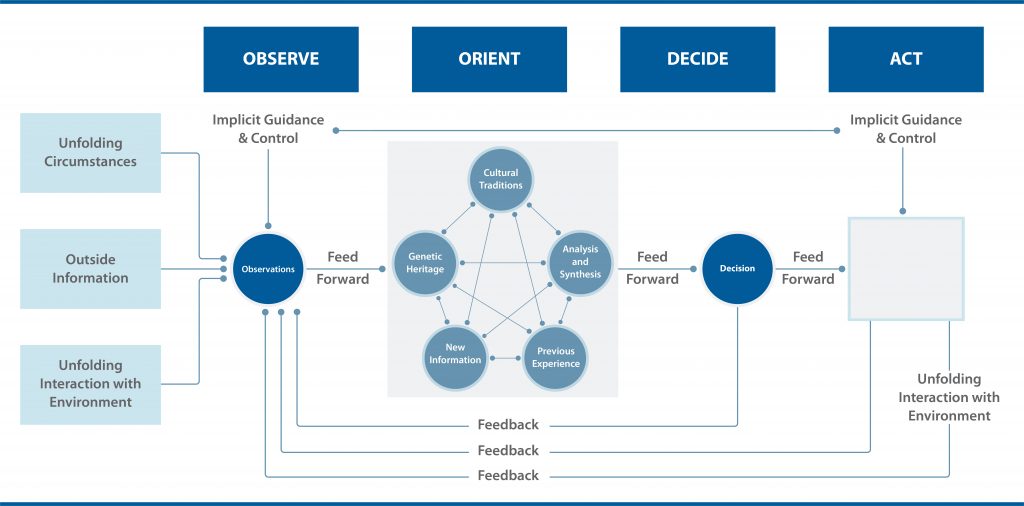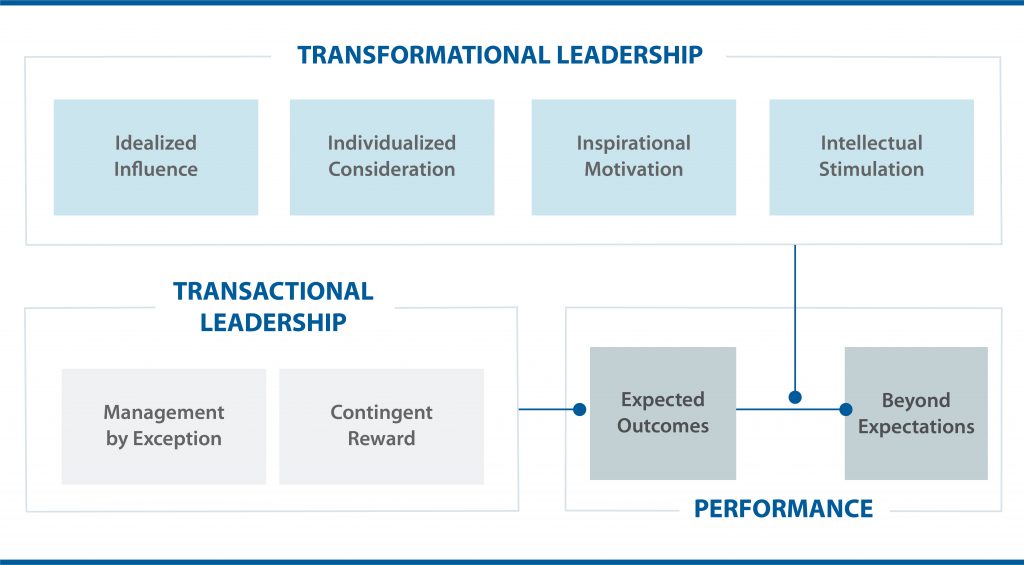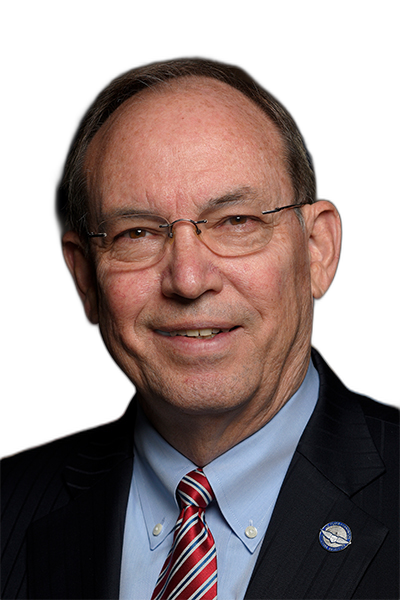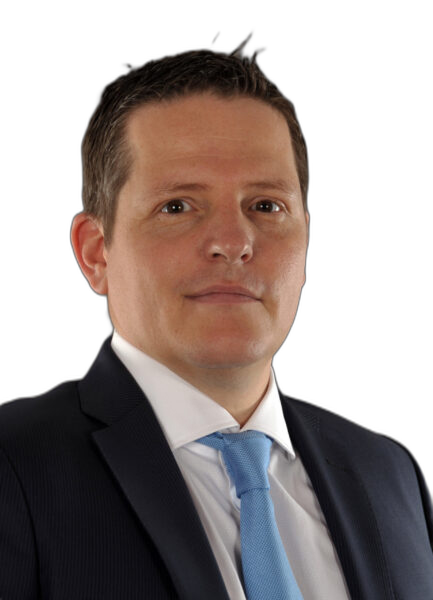Introduction
The past century has presented tremendous technological leaps, and present-day unmanned aerial vehicles (UAVs) and fifth- and emerging sixth-generation military aircraft introduce a new technologically disruptive environment for the air force. Emerging technologies such as artificial intelligence, big data, quantum technology, robotics, autonomous systems, new advanced materials, blockchain, hypersonic weapons systems, and biotechnologies applied to human enhancements, to name a few, will fundamentally change how air forces must organize and function.
Recognizing this, the United Kingdom’s Royal Air Force (RAF) launched ‘Astra’ in 2020, a campaign to build a ‘next generation’ air force that is fit for the future. Astra involves progressive change across the RAF, including how it commands and leads (RAF, 2020). Group Captain Blythe Crawford, responsible for driving the RAFX – the innovation hub of the RAF – encapsulates the transformation challenge as being that the RAF, set in its traditional ways, has been “attempting to run a fifth-generation air force with 1990s processes and technologies” (RAF, 2022). That human factors lie at the heart of military effectiveness is not a recent discovery. Napoleon Bonaparte highlighted the more significant impact of human factors over physical numbers and material when he wrote, “[I]n war, three-quarters turns on personal character and relations; the balance of manpower and materials counts only for the remaining quarter” (Napoleon, 1808).
This paper will champion the role of human factors, starting with the maverick, disruptor, or outlier, such as Colonel John Boyd, “the fighter pilot who changed the art of war” (Coram, 2004). Following a brief discussion on leadership styles and constructs, this paper will explore the notion of adaptive challenges versus technical ones (Heifetz, 1994; Heifetz, Linsky, and Grashow, 2019 and; Heifetz and Linsky, 2017). Finally, a deceptively simple three-step change model designed by Kurt Lewin (1947) and evolved by John Kotter (1996) is offered. These conceptual models focus on how a mindset or a paradigm can be shifted by changing human behavior and are provided as a way of thinking about leading change and transformation in the air force.
The Maverick
“It’s not the plane, it’s the pilot.”
Maverick to multiple people throughout Top Gun: Maverick (2022).
The maverick, disrupter, or outlier (Gladwell, 2008) is someone classed differently from the main body, usually an individual thinker, often a mixture of brilliance and brashness, characterized by a lack of deference and a confrontational style. Such a man was Colonel John Boyd, who served in the United States Air Force (USAF) for twenty-four years and fought through three wars. In 1953, Boyd was an F-86 Sabre pilot in the Korean war who was short-toured after 22 missions to attend the USAF Weapons School. Passing top of his class, he remained at the school as an instructor and head of the academic section, becoming known as ‘Forty Second Boyd’ – the pilot who could defeat any opponent in simulated air-to-air combat in less than forty seconds.
Boyd was the first person to codify the elusive ways of air-to-air combat, revolutionizing aerial warfare. Boyd’s ‘Aerial Attack Study,’ which he wrote as a young Captain, became the basis for USAF air combat doctrine. In 1966, as a Major, Boyd released his Energy-Maneuverability (E-M) Theory in collaboration with mathematician Thomas Christie and USAF First Lieutenant James Gibson while studying at the Georgia Institute of Technology. E-M Theory, an aircraft performance model, created the international standard for fighter aircraft design. Working later as part of a small advocacy group dubbed the “Fighter Mafia” at USAF headquarters, Boyd championed the lightweight fighter program, which led to the development of the USAF F-16 Fighting Falcon and US Navy’s F-18 Hornet aircraft. Boyd is considered the ‘father’ of these legendary aircraft.
After leaving the USAF in 1975, Boyd wrote Patterns of Conflict, which changed the warfighting doctrines of the US Army and Marines and significantly influenced the operational planning for the invasion of Iraq. Boyd first briefed Patterns of Conflict in 1981 to Dick Cheney, then a member of the House of Representatives. As Secretary of Defense, Cheney summoned Boyd to Washington in 1990 from Florida, where Boyd was living due to declining health. Boyd became part of the planning for Operation Desert Storm and influenced Cheney’s rejection of General Schwarzkopf’s initial plan (Coram, 2004). Operation Desert Storm is possibly the most successful air bombardment campaign in history.
Boyd is best known for developing the Observe-Orient-Decide-Act cycle, introduced in Patterns of Conflict, which is his most cited and least-understood legacy (Coram, 2004). As shown in Figure 1.1, Boyd’s Observe-Orient-Decide-Act cycle has thirty arrows connecting the various components, creating hundreds of possible loops. If someone truly understands how to use the OODA loop, it can create menace, uncertainty, and mistrust which can be exploited and magnified, capable, Boyd said, of “unraveling the competition” (Coram, 2004, p.334). For Boyd, the notion of tempo, or getting inside the opponent’s OODA loop, was critical: “In order to win, we should operate at a faster tempo or rhythm than our adversaries —or, better yet, get inside the adversary’s Observation–Orientation–Decision–Action time cycle or loop” (Boyd, 1976, p.22).

Each culture and military have prospered through its mavericks, disruptors, and outliers like Boyd, but examining his extraordinary career and late promotion to Colonel, (Coram, 2002 p. 255) writes: “A list of air force original thinkers – and this is a short list – would begin with his name. But his enemies prevailed. He had shot down too many generals ever to become a general.” Being passed over for a promotion was something Boyd understood, explained in his much-cited “to be or to do” speech which was an invitation for officers he respected to join him in his quest for change. According to Boyd, a choice had to be made to be “recognized by the system and promoted” or do something “that would last for the air force and the country.” It was unfortunate and said about the state of the American military culture that it was rarely possible to do both (Defense and National Interest, 2007).
Another classic example of a maverick, disruptor, and outlier is Lieutenant Colonel David Stirling, founder of the British Special Air Service (SAS) (Mortimer, 2022). Describing him as “mad, quite mad,” Field Marshall Montgomery nonetheless saw Stirling as a man greatly needed in times of war (Scottish News, 2022). Alan Turing was another brilliant original thinker – a mathematician, founder computer scientist, and philosopher; he broke the Nazi Enigma code. He died in disgrace at 41 after ingesting cyanide. According to leading computer scientist John Graham-Cumming, Turing “was a national treasure, and we hounded him to his death” (Daily Mail, 2009).
Figures such as John Boyd, David Stirling, and Alan Turing were instrumental in identifying the need for and initiating change, recognizing that problems went beyond simple technical solutions. The question for the military establishment is whether it can cope with the mavericks, disruptors, and outliers that do not ‘fit’ within the established value set. If the air force is to adapt and thrive in a technologically disruptive environment, it must embrace rather than marginalize disruptive thinking which challenges convention and the status quo. For its part today, the RAF recognizes the need to “unleash, empower and enable our people to maximize their full potential in order to create the future air force” (RAF, 2022).
Leadership Styles and Constructs
Leadership styles hold the key to leading change successfully. Heifetz (2017) emphasizes the need for leaders to think politically when dealing with supporters, those in opposition, and those uncommitted and wary. Thinking politically involves building personal relationships, keeping opposition close, accepting responsibility for one’s piece of the mess, acknowledging others’ loss, modeling behavior, and accepting casualties. It is essential that leaders can use this thinking to successfully involve individuals likely to be affected by a change in planning for it because people tend not to resist what they create.
Drawing on the work of James MacGregor Burns (1978), who described “two basic types of leadership,” Bass (1985) contrasts styles of transactional and transformational leadership. Transactional leadership involves considering exchanging one thing for another, reflecting the bulk of relationships between leaders and followers in our world. In contrast, transformational leadership is more potent, recognizing the needs of followers, seeking out potential motives, and satisfying higher needs. Transformational leadership can convert followers into leaders and leaders into moral agents capable of producing much broader change.

Unlike Burns, however, Bass argues that leaders are both transactional, delivering expected outcomes, and transformational, delivering performance beyond expectations. Bass’s four constructs of leadership, modeled in Figure 1.2, can be summarized as follows: Idealized influence, where the leader is admired and serves as a role model for followers; Inspirational motivation, where the leader inspires and motivates followers; Individualized consideration, where the leader demonstrates genuine concern for the needs and feelings of followers to bring out their best efforts, individually, and; Intellectual stimulation, where the leader challenges followers to be innovative and creative.
Owing to the American-centricity of Bass’s model, there may be limitations to its application elsewhere, so it is no ‘silver bullet.’ But those looking to be transformational leaders in the air force might examine the work of Bass and Burns and ask the question, what do these styles and constructs mean in my culture and organizational context? How do these relate to embracing disruptive thinking and disruptors across my organization who can help achieve the desired transformation? Leadership will be a decisive factor if the air force is to truly unleash, empower and enable its people to realize the transformation required to move into the future.
Adaptive Challenges and Change Models
A critical leadership task is understanding the nature of a challenge and being able to differentiate between challenges that reflect ‘technical problems’ and those that reflect ‘adaptive problems’ (Heifetz, 1994). Technical problems are problems with known solutions where we turn to authority with the expectation that they can solve the problems. An example would be a broken aircraft engine where an engineer is needed to repair it, the solution is self-evident, and the engine now works. Adaptive challenges are different because there is no self-evident solution, authority is incapable of fixing the issue, and no adequate response has yet been developed.
Examples of adaptive challenges for the air force may relate to maintaining competitive advantage in the face of radical spiraling innovation, existing working models, or process inefficiencies. Problems do not come conveniently labeled technical or adaptive, and many problems are a mix of both. A source of leadership failure is when authorities treat adaptive challenges like technical ones, which Heifetz cautions against (Heifetz and Linsky, 2017). Air force leaders must be able to untangle the web of confusion, delegate technical problems to the appropriate authority and address the adaptive challenge through ‘adaptive work.’
Adaptive work aims to create conditions and environments involving leader and follower interaction which can enable the organization or affected community to ‘thrive’ in the face of complex problems. According to Heifetz, addressing an adaptive or a mix of technical and adaptive challenges requires six leader behaviors or principles (Heifetz, 1994; Heifetz, Grashow, and Linsky, 2009 and; Heifetz and Linsky, 2017). These ‘principles of leadership’ or for ‘leading adaptive change’ have evolved but can be summarized as:
- Get on the balcony. A leader must have a detailed feel for the situation on the ‘dance floor,’ but to understand the bigger picture, gain a distanced perspective, identify patterns and be under less pressure to decide, they must get on the balcony. The essential lesson is to move between the dance floor and balcony and avoid being trapped within one perspective.
- Identify the adaptive challenge. A leader must be prepared to identify the brutal facts of adaptive problems and the adaptive changes required.
- Regulate distress. A leader must perform a balancing act, not overwhelm but also maintain enough tension to maintain urgency. Questions must be asked, and unproductive norms must be challenged even when a leader does not hold the answer.
- Maintain disciplined attention. A leader identifies distractions and focuses on the tough issues. People tend to slide back into old behaviors and technical problems unless the focus is maintained.
- Give work back to the people. Authority does not have the answers; encouraging others to assume responsibilities and be part of the change through encouragement and support is vital.
- Protect the voices from below. Having encouraged people to accept responsibility and propose ideas, a leader must protect rather than squash ideas and voices, including the dissenters.
These leadership principles are highly pertinent to the military environment and, applied with the constructs of transformational leadership discussed earlier, can better equip air force leaders to approach adaptive challenges. Yet the air force and the military environment present unique challenges for leaders in addressing adaptive challenges, particularly in leading change. Given their closed nature, rigid structure and hierarchies, traditions, and ways of working, including conceptions of command, authority, and delegation, the conditions needed for adaptive solutions are not readily found in military organizations. In the military environment, perhaps more than in any other, leaders must think about how to push boundaries in challenging people and existing mindsets to change towards new cultural paradigms.
Lewin’s three-stage conceptual model for managing change has been used successfully in UK defense organizations. Kurt Lewin (1890-1947) pioneered applied research, action research, and group communication as a professor at the Massachusetts Institute for Technology (MIT), developing an early change model with three stages (Lewin, 1947). In explaining his three-stage model, Lewin used the analogy of a block of ice: To achieve a new shape, ice must first be melted (‘unfreeze’), set into its new shape (‘transition’), and finally frozen (‘freeze’). Accordingly, Stage 1 relates to people, where the existing “mindset” is dismantled by ‘unfreezing.’ Resistors are neutralized or bypassed, and existing inertia about the status quo is overcome. In Stage 2, the transition occurs as forces resisting change are overwhelmed by the forces driving change. A period of confusion may become apparent here as old ways are being challenged without a clear picture of what they are being replaced. Stage 3 relates to the structure being frozen in its changed form.
Aiding the application of this three-stage model, Lewin proposed an instrument called Force Field Analysis which measures factors (“forces”) that influence the achieving (helping forces) of a goal or blocking (hindering forces) that prevent the achievement of the goal (1951). Lewin’s procedural model (1947) can act as a handrail when leading change and is usefully combined with Kotter’s more contemporary Eight Step model (1996). The essence and the basis of the logic of Lewin’s model remain integral within Kotter’s evolution of the model, and each step in it can be interpreted as a continuum addressing why change fails. Kotter’s Eight-Step Model has stood the test of time and application but was enhanced to reflect the uncertainty presented by a rapidly changing world, which had led to criticism of it being dated (Kotter et al., 2021). The original eight “steps” became described as “accelerators” in a process that enables the strategy network to function, as illustrated in Figure 1.3.
Conclusion
The technologically disruptive environment is shaped by emerging technologies such as artificial intelligence, big data, quantum technology, robotics, autonomous systems, new advanced materials, blockchain, hypersonic weapons systems, and biotechnologies applied to human enhancements, to name a few. This emerging environment will transform military capabilities, strategy, and operations. To adapt and change successfully, air force leaders will be required to embrace and champion disruptive thinkers and develop a system or systems that can unravel the opposition by adopting ideas like the OODA loop, which was designed to exploit weapons and operations to generate a rapidly changing environment and inhibit adversaries from being able to adapt to these situations.
There is a need to recognize that the challenge of transformation for the air force is not solely technical but a mix of technical and adaptive challenges. Air force leaders must think politically about human factors in approaching adaptive challenges and leading change. Most of the problem of change lies within the culture of the organization, the way things are done, and the shared values, symbols, behaviors, and assumptions. It will accordingly require individuals within the organization to alter their practices. People themselves are part of the problem, and the solution lies with them. To achieve change effectively, we must understand why change is resisted and ways to overcome these barriers.
The conceptual models presented in this discussion do not follow a linear progression, and the reality may be that one step forward results in two steps back. Advancing change and transformation will only succeed if change leaders in the air force can “unfreeze” existing mindsets and if the Force Field Analysis provides a greater weighting to the forces that support change than those resisting it. Having the right people that understand the problem and that can deploy the processes to deliver change is vital. The challenge of change relates to transforming people. Transformational leadership must provide confidence and create mutual trust by offering a culture-specific model that causes people to embark on the critical journey of change.
References
Bass, B. M, (1985), Leadership and Performance, N.Y. Free Press.
Boyd, J. R., Christie, T. P., Gibson, J. E. (1966) Energy Maneuverability (U) ‘Confidential’ Air Proving Ground Centre Elgin AFB FL. US Department of Defense.
Boyd, J. R. (1976) Patterns of Conflict. This was first presented in 1976 and developed throughout the 1970s
Available at: https://www.coljohnboyd.com/static/documents/2018-03__Boyd_John_R__ed
ited_Hammond_Grant_T__A_Discourse_on_Winning_and_Losing.pdf
Bonaparte, N. (1808) ‘Observations sur les affaires d’Espagne, Saint-Cloud, 27 août 1808’
Burns, J.M, (1978), Leadership, N.Y, Harper and Row.
Daily Mail 12 September 2009.
Available at: https://www.dailymail.co.uk/news/article-1212910/How-Britain-drove-greatest-genius-Alan-Turing-suicide–just-gay.html Accessed 6 November 2022.
Defense and National Interest (2007)
Available at: https://dnipogo.org/john-r-boyd/to-be-or-to-do/#:~:text=Col%20John%20R.,Boyd
%2C%20USAF&text=Each%20one%20would%20be%20offered,rarely%20possible%20to%20do%20both
Gladwell, M. (2008) Outliers The Story of Success. London, Penguin Books.
Heifetz, R.A. (1994) Leadership without Easy Answers. The Bel Knap Press of Harvard University Press, Cambridge.
Heifetz, R. A., Grashow, A., & Linsky, M. (2009). The practice of adaptive leadership: Tools and tactics for changing your organization and the world. Harvard Business Press.
Heifetz, R. A., and Marty Linsky, M. (2017) . Leadership on the Line: Staying Alive through the Dangers of Change, 2. Harvard Business Review Press.
Kotter, J. P. (1996) Leading Change. Boston: Harvard Business School Press.
Kotter, J. P. (2012) Accelerate. Harvard Business Review 90, no. 11 (November 2012): 45–58.
Kotter, J. P., Akhtar, V. and Gupta G. (2021) Change: How Organizations Achieve Hard–to–Imagine Results in Uncertain and Volatile Times. John Wiley & Sons, Inc. Hoboken, New Jersey.
Lewin, K. (1947). Frontiers in group dynamics: Concept, method and reality in social science; social equilibria and social change. Human Relations, 1, 5-41.
Lewin K. (1951) ‘Field Theory in Social Science,’ Harper and Row, New York.
Mortimer, G. (2022) David Stirling, The Phoney Major: The Life, Times and Truth about the founder of the SAS. London, Constable.
RAF (2020)
Available at: https://www.raf-ff.org.uk/project-astra-progress/
RAF (2022) Royal Air Force, Taking digital transformation to new heights – Digital Report 2022. Available at: https://technologymagazine.com/brochure/raf-taking-digital-transformation-new-heights
Schein, E. H. (1988). Organizational psychology (3rd ed.). Englewood Cliffs, NJ: Prentice Hall.
Scottish News (2022)
Available at: https://www.scottishdailyexpress.co.uk/news/scottish-news/true-story-david-stirling-scots-28331949 Accessed 5th November 2022.
Top Gun: Maverick (2022). Action-Drama film, directed by Joseph Kosinski, released 27th May 2022, starring Tom Cruise as Lt Pete “Maverick” Mitchell








